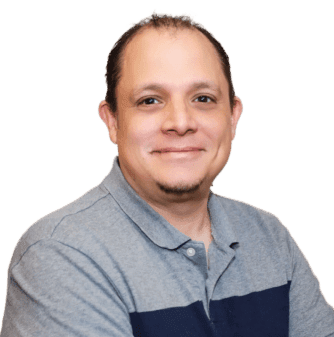A Comprehensive Guide to ADA Compliance & Website Accessibility

A Comprehensive Guide to ADA Compliance & Website Accessibility
Understanding ADA Compliance for Websites
If you are a webmaster, you might be wondering about the necessity of ADA compliance for your website. Legally, this is a complex matter characterized by ambiguity and ongoing legal disputes. Nevertheless, aside from the evolving legal landscape, there are practical advantages to ensuring your website aligns with web accessibility standards. These benefits go beyond mere compliance with the Americans with Disabilities Act (ADA) and encompass principles of user-friendliness and Search Engine Optimization (SEO). In this article, we delve into the history of ADA compliance for websites, its requirements, and the advantages it can offer.
A Brief History of ADA and Its Application to Websites
The Americans with Disabilities Act of 1990 (ADA) aimed to prevent discrimination against individuals with disabilities. Initially, it primarily addressed physical accommodations, such as wheelchair ramps. However, as the internet became integral to daily life, the ADA’s scope extended to websites. The ADA’s language itself has not been updated to include explicit references to websites and online applications. While federal, state, and local governments are obligated to make their websites accessible under Section 508 of the ADA, the situation is less clear for private websites. In the United States and the United Kingdom, non-governmental websites fall under the category of public sector entities and may face lawsuits from disabled individuals under Title III of the ADA if they are inaccessible. Nevertheless, the Department of Justice has stated:
“Absent the adoption of specific technical requirements for websites through rulemaking, public accommodations have flexibility in how to comply with the ADA’s general requirements of nondiscrimination and effective communication. Accordingly, noncompliance with a voluntary technical standard for website accessibility does not necessarily indicate noncompliance with the ADA.”
In essence, businesses have the liberty to choose which accessibility guidelines to follow due to the lack of enforceable legal standards within the ADA.
Consequences of Non-compliance with the ADA
While the absence of federal requirements for website accessibility may provide flexibility, it does not absolve businesses from ADA obligations. Some states have set legal precedents requiring compliance with specific standards. Notably, the 2017 case of Gil v. Winn-Dixie in Florida compelled Winn-Dixie to pay $250,000 for website updates to align with Web Consortium Accessibility Guidelines (WCAG). The European Union also imposes strict accessibility standards on member states for public sector websites and applications, threatening fines and legal penalties for non-compliance. In jurisdictions without clear legal precedent, a guideline has emerged: if a physical store must meet accessibility requirements, its website version should do the same.
Benefits of Website Accessibility
Even in areas with lax accessibility regulations, ensuring website accessibility offers numerous advantages. Firstly, it serves as a safeguard against potential lawsuits. Legal interpretations concerning ADA and websites are evolving, with active cases awaiting resolution. By adhering to accessibility standards now, businesses can avoid unexpected legal ramifications. Secondly, it makes sound business sense. Inaccessible websites alienate potential customers. With around 53 million American adults with disabilities, half of whom use the Internet regularly, neglecting accessibility means overlooking a substantial market. Compliance also reflects social responsibility, fostering positive public perception. Additionally, website accessibility can indirectly benefit SEO, as many accessibility measures align with search engine recommendations.
Understanding Web Accessibility
Although there is no federal definition of accessibility, many refer to the Web Content Accessibility Guidelines (WCAG) by the Web Accessibility Initiative. These guidelines comprise four key principles for accessible websites: Perceivable, Operable, Understandable, and Robust.
- Perceivable: Content must be presented in a way that all users can perceive, regardless of disabilities. This involves providing alt text for images, alternative CAPTCHA options, and subtitles, transcripts, and captions for media content.
- Operable: User interface components should be usable by all, regardless of disability. This requires keyboard navigation and avoidance of time-based constraints.
- Understandable: Information and user interface operation should be clear to users with disabilities. This entails consistent navigation, clear instructions for user input fields, and transaction confirmation options.
- Robust: Content must be compatible with various user agents and assistive technologies. This involves proper HTML tags and allowing users to determine the name and role of user interface elements programmatically.
Tips for Getting Started with Accessibility
Here are some practical tips aligned with WCAG principles:
- Avoid autoplay media, as it can interfere with assistive technology.
- Refrain from using automatically advancing carousels and slideshows.
- Ensure dynamic content informs assistive tools of changes, using ARIA landmarks.
- Consider various disabilities, including colorblindness and photosensitive epilepsy. Maintain sufficient contrast between text and background colors, and avoid flashing images.
Conclusion
Websites, as public sector entities, must comply with ADA requirements for accommodating individuals with disabilities. In the absence of federal guidelines, businesses must determine their own approach to accessibility. Nevertheless, following established guidelines like WCAG is a prudent choice. This not only shields your business from potential legal consequences but also expands your customer base, enhances your company’s image, and can positively impact SEO.
To assess your ADA compliance, you can conduct an ADA Compliance Scan.
References
- 10 Ways to Make Your Website Accessible by Ellice. DreamHost Blog. July 24, 2018.
- Give Your SEO a Boost With These 12 Accessibility Improvements by Tamar Weinberg. Search Engine Journal. June 26, 2017.
- Website Accessibility & the Law: Why Your Website Must Be Compliant by Kim Krause Berg. Search Engine Journal. January 9, 2019.
- Your Overview to ADA Compliance for Websites in 2018 by Craig Kazda. Quantum Dynamix. December 6, 2017.
AI-Powered Accessibility Compliance
Our Accessibility AI Agent continuously scans your site for ADA compliance issues, automatically fixes common problems, and provides detailed reports for manual review. Stay compliant without the constant manual audits—AI ensures equal access for all users 24/7. Deploy accessibility AI →




